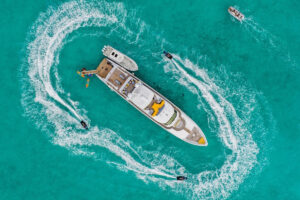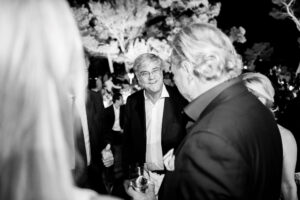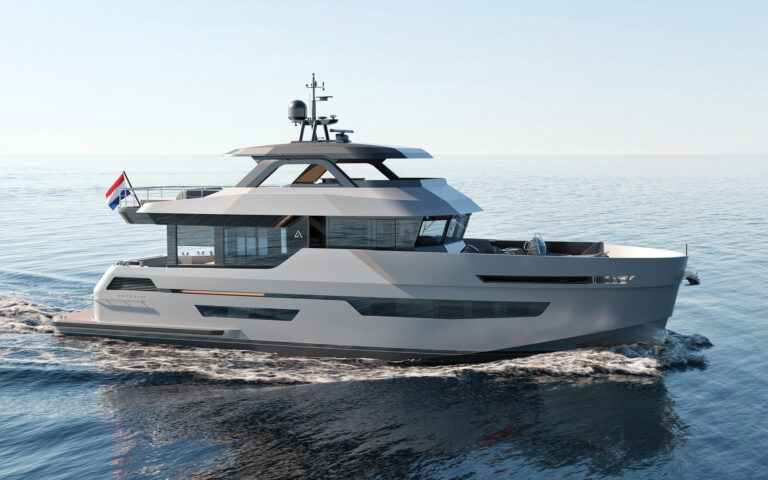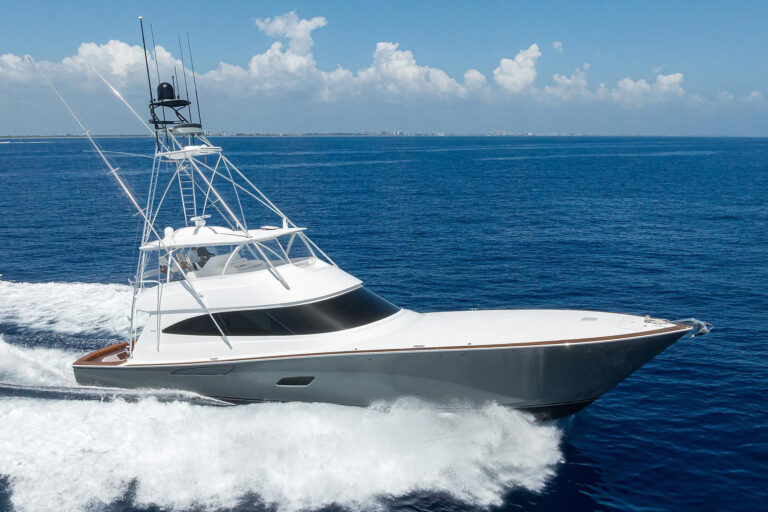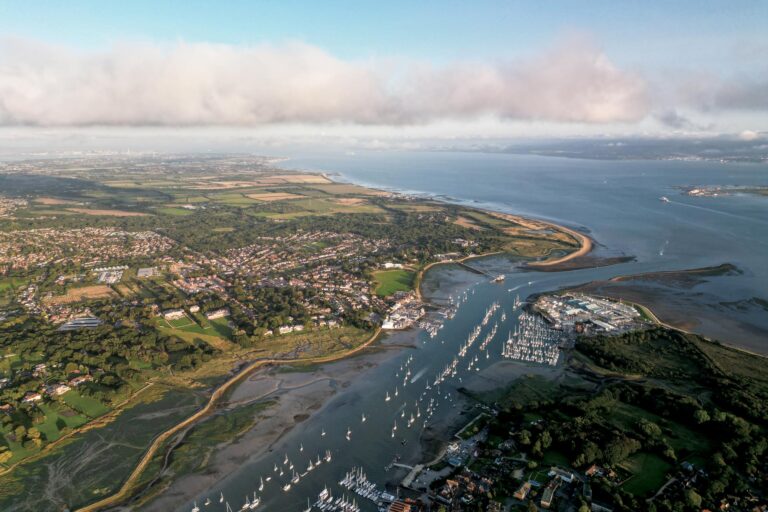
Heading south on the Intracoastal Waterway (ICW) in early fall, we expect warmer weather at each destination. After all, the plan for our one-year virtual cruise of the East Coast is to stay ahead of cold temperatures all the way to Florida. But Mother Nature rarely cooperates, and we find ourselves reaching for our winter jackets when leaving Wrightsville Beach, North Carolina, in mid-October. Surely it’s much warmer in Charleston, South Carolina, our next scheduled major stop.
This unseasonably cool weather is not discouraging those in small, open boats from fishing for flounder and speckled trout along the sandy stretches of Masonboro and Myrtle Grove sounds. The air may be chilly, but the water is warm and offers plenty of action. The ICW is straight and narrow here, and it’s important to stay in the middle of the marked channel. Temporary buoys, some of which are not on the charts, mark the shoal areas where our route crosses side creeks and small inlets. In some places we’ve discovered that the deeper channels no longer follow the ICW’s magenta line on our chart, so we pay special attention to the visuals in front of us and use our chart as a more general reference.
Mouse over the chart to see our recommendations for Charleston.
My wife and I have fond memories of visiting Southport, North Carolina, years ago, and we stop here for lunch, tying up at the nicely updated Southport Marina. Walking by the Adkins-Ruark House, where Robert Ruark, author of The Old Man and the Boy, lived, makes me want to reread his wonderful book. Anyone who grew up under the influence of a strong but kind grandfather will love this story. Southport is a quiet, friendly town, which invariably leads many visitors to consider retiring here. Its picturesque streets lined with live oaks and historic homes have been the scene of several television shows and movies, including Dawson’s Creek and Crimes of the Heart.
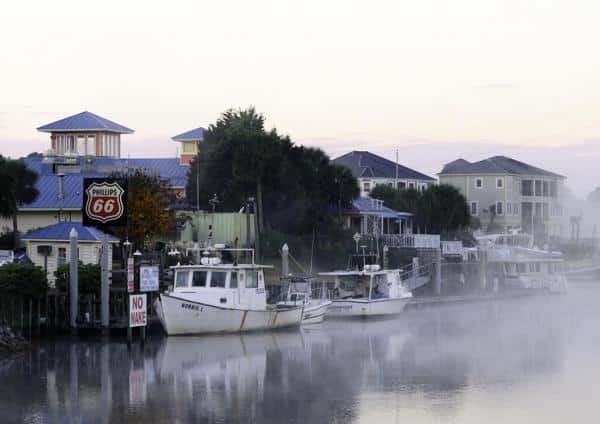
With 120 miles still to go to Charleston, it’s time for an overnight stop at Harbourgate Resort & Marina, just 10 miles north of Myrtle Beach. We grab a casual dinner at the on-premises restaurant and plan for an early departure the next day. Morning fog causes us a slight delay, but it also provides dramatic scenery along the way. We consider running outside as we near Georgetown, but because of a stiff wind and opposing tide in the Winyah Bay Inlet, we stay inside, running all the way to Charleston in nine hours.
As we exit the narrow ICW channel at the western tip of Sullivan’s Island (MM462), the wide-open but very busy Charleston Harbor greets us with a forest of navigation marks and a maze of moving freighters, small ships, tour boats and yachts of all kinds and sizes. We pick up the South Channel Range and find our way to the Ashley River. The Harborage at Ashley Marina, located just past the large Charleston City Marina and beyond a 56-foot fixed bridge, has transient space on the outside of its face dock. Squeezing in between two luxurious 100-plus-footers results in some white knuckles as the 2-knot river current takes control for a few heart-stopping seconds. Twin engines and an aggressive use of our boat’s throttles save us from an embarrassing (and expensive) landing.
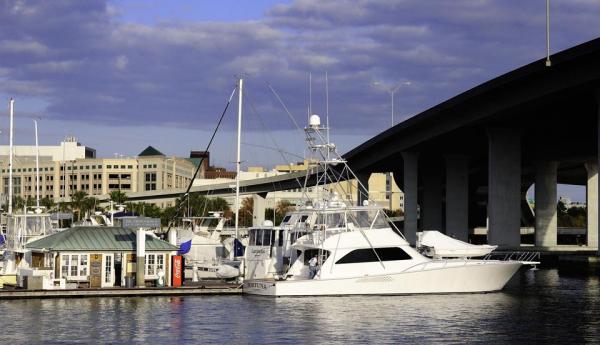
The marina’s courtesy car has already left, so we take a short taxi ride to the center of town, which is packed on a Saturday night with a mixed crowd of locals, tourists and cruise-ship passengers. Charleston is a Southern gem, offering restaurants, shops and entertainment for everyone. Featured as the quintessential Southern town by national magazines including Travel + Leisure and Southern Living, it was voted “Top City in the United States” by Condé Nast Traveler magazine.
Since we are getting a late start, we’re lucky to find two open seats at the bar at Halls Chophouse, where we find that the food and service definitely live up to their rave reviews. We decide to go the full monty and order the famous bread pudding for dessert. To compensate for this sinful indulgence, we take a leisurely stroll back to the marina hoping to burn off a few calories.
The next morning we follow the 12 million previous visitors who have taken a tour of Fort Sumter, accessible by private boat or passenger ferry. We elect to take the 9:30 a.m. ferry from Liberty Square on Concord Street, enjoying our carefree half-hour harbor cruise out to the Fort Sumter National Monument. Built after the War of 1812, Fort Sumter is where the first shots of the Civil War were fired in 1861. It was occupied by a Union garrison with limited supplies and ammunition, and its commander surrendered to Confederate forces the next day. The on-site tour takes just an hour, including time in the museum. This is a must-see attraction for history buffs.
After our return to town and a brief walk around The Battery, a waterfront promenade famous for its beautiful antebellum homes, we grab a quick lunch and then take a one-hour carriage tour of the Charleston residential district. Operated by Palmetto Carriage Works, our carriage has a guide who is both informative and good-natured as he points out key historic homes, mansions, gardens, churches and parks along our 30-block route. We learn a lot, even though we had walked these streets on previous trips.
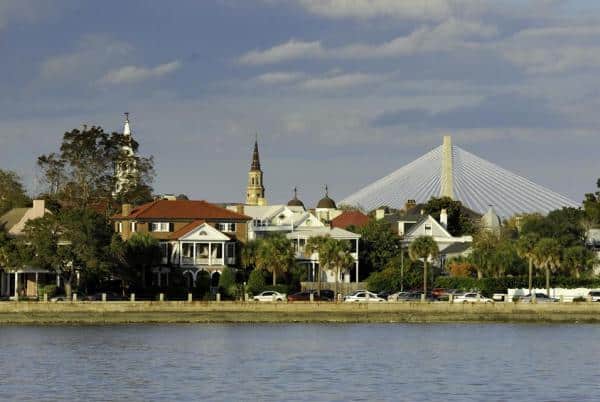
Our last trip to Charleston was during midsummer, and by chance we had arrived during the last two days of its annual Piccolo Spoleto Festival, a spectacular 17-day celebration of the performing and visual arts. Hundreds of events including art exhibits, musical performances (classical, jazz, choral, bluegrass and more), dance, theater, children’s activities and film showings are held throughout the city’s many theaters, museums, churches, schools and outdoor parks. The 2014 festival will be from May 23 through June 8, so we will try to plan our return trip to coincide with these dates.
Another summer activity we’ll try to make is a home game of Minor League Baseball’s Charleston RiverDogs, played in beautiful Joseph P. Riley Jr. Park, which is within walking distance of the Harborage. This Class A team is an affiliate of the New York Yankees, and we’ve enjoyed the low-key, relaxed atmosphere of these minor league games during past trips to Charleston.
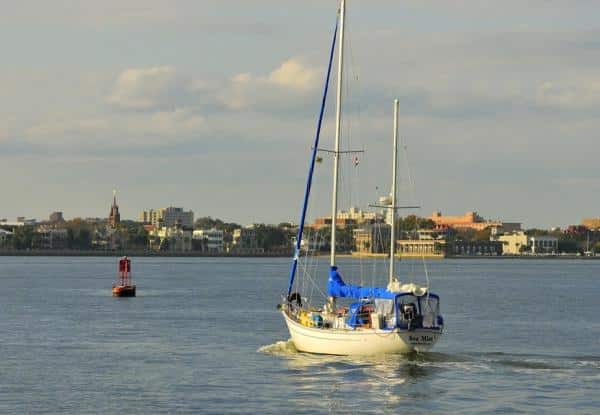
All in all, Charleston is a beautiful Southern city highlighted by its historic antebellum architecture and waterfront scenes. Add the elements of its renowned seafood cuisine and nationally recognized cultural events, and you have an exciting place to visit. But above all, Charleston’s friendly, charming people are the main reason why so many consider it to be America’s favorite city.
We’ve enjoyed our few days here, but the cool temperatures are telling us to continue moving south. Join us at yachtingmagazine.com/virtualcruise as we head to Key West, Florida, with stops in Beaufort, South Carolina; Savannah and Cumberland Island, Georgia; and Fernandina Beach and St. Augustine, Florida. The ICW route gets a bit tricky during this stretch, and we’ll point out some of the most challenging, and rewarding, sections.
Destination: Florida
We continue our Virtual Cruise of the East Coast heading south on the ICW in the fall, hoping to keep ahead of the colder temperatures. So while we have thoroughly enjoyed our stay in Charleston, South Carolina, we ready our boat and crew for our 245-mile leg to the state line of Florida where we hope to find warm, sunny skies.
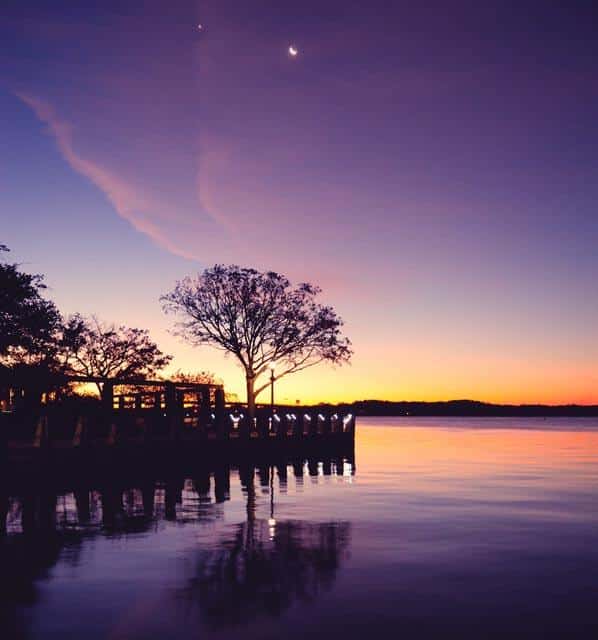
Beaufort, SC 32° 46.46′ N 79° 56.92 N
Soon after we exit Elliott Cut just outside of Charleston (MM469), we are boarded by the U.S. Coast Guard for a safety inspection. The young, polite officers find everything in order and give us a document to show we’ve passed the inspection in case we’re boarded again on our trip south. The 12-miles along the wandering Stono River take us through beautiful marshland, a sign that we’re entering South Carolina’s famed “lowcountry.” We arrive in Beaufort (MM535) and get a slip at the Downtown Marina, located in the historic section of this charming southern town and adjacent to an attractive waterfront park. Our leisurely walk through the picturesque town has us wondering where we’ve seen some of these stately homes before, and we later read that The Big Chill, The Prince of Tides and Forrest Gump have all been filmed here. Dinner at the Saltus River Grille is a big hit thanks to their signature dish of lowcountry shrimp and grits. The marina offers a courtesy car, and we use it to reprovision at the local Publix Super Market.
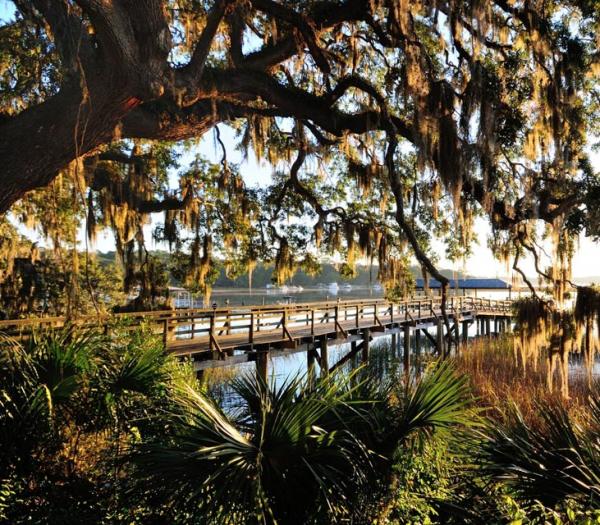
Isle of Hope, GA 31° 58.71′ N 81° 03.24′ W
We arrive at the friendly Isle of Hope Marina (MM 590) in late afternoon and line up for fuel – this is the only fuel stop for the next 90 miles. Isle of Hope is a convenient base from which to explore Savannah, as a city bus stops near the marina. Proving that Southern hospitality really exists, the owner of the marina drives us to the Driftaway Café nearby, and after a great dinner the restaurant’s hostess drives us back. The next morning we meet with other cruisers heading south to discuss getting through Hell gate, the narrow cut between Vernon and Ogeechee Rivers – notorious for its shoaling and swift current. The trick here is to approach it at a mid and rising tide and to keep an eye on the markers behind you, staying lined up in the channel and not letting the strong, sideways current push you onto the shoals. Our timing is spot on. Our next challenge, 50-miles south, is Little Mud River (MM650), a five-mile stretch of curves and bends with spots of three-foot depths being reported. We slow down and wait for a rising tide. Luckily a much larger vessel is in front of us, and we squeek through without a problem.
**
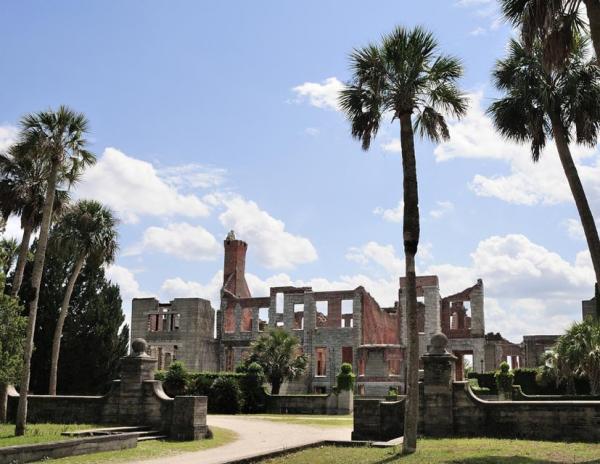
Cumberland Island, GA 30° 45.47′ N 81° 29.06′ W**
We arrive here late in the day after navigating another challenge at Cumberland Dividings where the Cumberland and Brickhill Rivers meet. We were warned not to follow the chart’s magenta line, but to follow the marks and stay close to the greens. New, temporary marks create a very narrow passage, making things even more confusing. (Our chartplotter shows we are on land!) Thankfully at high tide, we show 5.2 feet under our keel, so we wouldn’t want to try this at low tide. We continue past Drum Pt. Island and then make a U-turn up the channel between Drum Pt. and Cumberland Island, dropping our hook not far from a public landing dock. While the dock is reserved for the National Park Service boat and the ferry that runs to St. Mary’s, Georgia, there is space to tie up our dinghy. Boats smaller than 35-feet are permitted to dock during the day, but space is limited on a first come, first served basis.
The only accommodations on the island are at the Greyfield Inn or at one of the NPS campsites. The island is known for its hiking trails that lead to the ocean beach and past the ruins of the mansion of Dungeness Plantation, built in 1884. Wild horses still roam the island (although they’re being removed for environmental reasons), and loggerhead sea turtles continue to nest on the ocean beaches. This is a must stop for nature lovers.
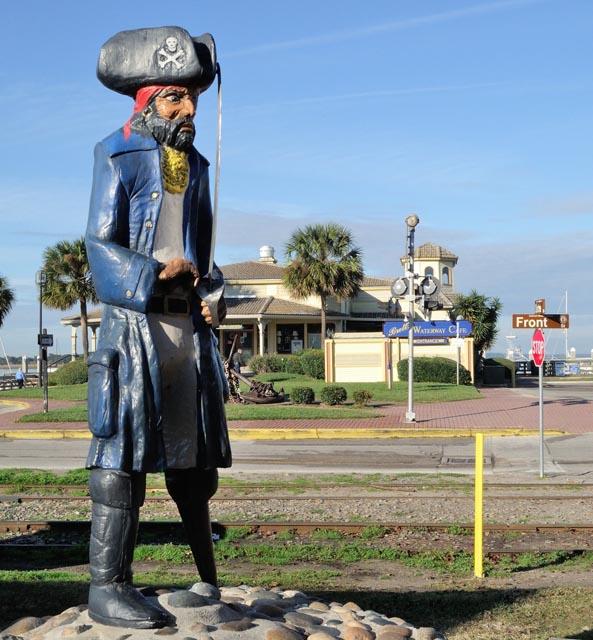
Fernandina Beach, FL 30° 40′ N 81° 27.83 W
Just six miles south of our Cumberland Island anchorage is Fernandina Beach, Florida (MM716), where we hope to finally find warmer temperatures. We get a slip at the city’s well run Fernandina Harbor Marina, located downtown in the attractive historic district. Situated on Amelia Island, a playground of sandy beaches, high end resorts and championship-calibre golf courses, Fernandina Beach is also an industrial town, as it is home to two working paper mills, a deepwater port and a shrimping and fishing fleet. So while there are many fine restaurants and shops that cater to the vacationing crowd, there are also many more shops and saloons that cater to the working class crowd. It’s still unseasonably chilly, so we grab our jackets and walk the town, stopping first at the Amelia Island Museum of History on 3rd Street where we learn about the area’s 500 years of Spanish influence. In the mood for a casual dinner we enjoy a great pizza at Arte Pizza on North 3rd St. We extend our stay in Fernandina for two days, as we find it a fun, interesting place to unwind. Morning coffee and fresh pastries at Amelia Island Coffee and a fine, romantic dinner at Le Clos are two more highlights of our visit here.
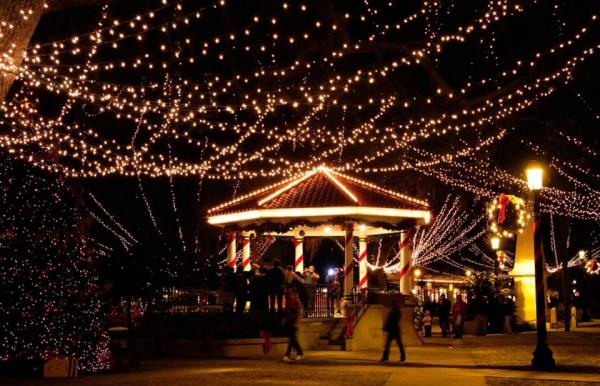
St. Augustine, FL 29° 54′ N 81° 20′ W
Our 60-mile voyage from Fernandina Beach to St. Augustine (MM776) has few navigational challenges, as the reported depths along the ICW seem to be relatively accurate – with one exception, St. Augustine Harbor. Here it’s very important to follow the new marks, confusing as they are, as shoaling is a constant problem. We arrive at the Municipal Marina, where we are extra cautious in maneuvering into our assigned slip, as the river current can be tricky.
While we have visited this historic city several times before, we always look forward to seeing more of it. By the time we’re ready to go exploring, the sun has set and we’re pleasantly surprised by all the joyous Christmas lights and decorations along the waterfront park. Indeed, National Geographic has elected St. Augustine’s “Night of Lights” as one of the best holiday lighting displays in the world. After dinner at the Columbia Restaurant (good Cuban food) we join the crowd of tourists for a walk along St. George Street, blocked off from automobile traffic years ago. Shops, art galleries, cafes, pubs and ice cream parlors line the narrow street. If you’re into “theme tours,” try GhoSt Augustine for a tour through the haunted past of this ancient city.


